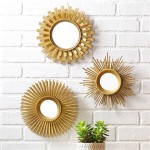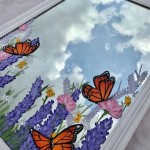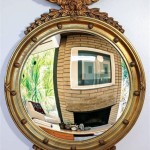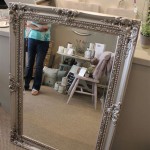How To Make A Rustic Mirror Frame
A rustic mirror frame can add a touch of charm and warmth to any living space. Its weathered appearance and natural materials evoke a sense of history and handcrafted elegance. This article will provide a comprehensive guide on constructing a rustic mirror frame using readily available materials and simple techniques.
Materials Needed:
The first step is gathering the necessary materials. The core material for a rustic frame is wood. Reclaimed wood adds authentic character, but new wood can be artificially aged for a similar effect. Recommended wood types include pine, cedar, or barn wood. The dimensions of the wood will depend on the size of the mirror and the desired frame width. Other necessary materials include wood glue, finishing nails, a hammer, a saw (miter saw recommended for angled cuts), sandpaper, measuring tape, and wood stain or paint in a desired rustic color.
Preparing the Wood:
Accurate measurements are crucial for a well-fitting frame. Measure the mirror's dimensions precisely. Add the desired frame width to each side to determine the length of each piece of wood. For example, for a 20x30 inch mirror and a 4-inch frame, the two vertical pieces will be 38 inches long, and the two horizontal pieces will be 28 inches long. Cut the wood pieces to the calculated lengths. A miter saw provides the cleanest 45-degree angle cuts for a professional finish.
Creating a Rustic Appearance:
Several techniques can achieve a rustic look. If using new wood, distressing techniques can simulate the wear and tear of age. Methods include hitting the wood with chains or other metal objects to create dents and using a wire brush to roughen the surface. Applying a wood stain in a weathered gray, brown, or white can further enhance the effect. Alternatively, a dry brush technique with paint can create a layered, aged appearance. If using reclaimed wood, simply cleaning the wood and potentially sanding down any rough edges may be sufficient.
Assembling the Frame:
Once the wood pieces are cut and distressed, assemble the frame. Apply wood glue to the mitered edges of each piece, ensuring a strong bond. Then, carefully join the pieces together, forming a rectangle. Secure the corners with finishing nails, hammering them in straight and countersinking them slightly below the wood surface. Wood filler can fill the nail holes for a smoother finish and can be sanded down once dry.
Finishing the Frame:
After the glue dries and the nails are set, apply the chosen finish. If using stain, apply it evenly across the wood surface, following the manufacturer's instructions. Multiple coats can create a richer color. Allow each coat to dry completely before applying the next. If using paint, a dry brush technique can enhance the rustic appearance. Dip the brush lightly into the paint, removing excess paint, and then brush lightly across the wood surface to create a textured look. A sealant can be applied as a final step to protect the wood and enhance its longevity.
Attaching the Mirror:
Several methods exist for securing the mirror to the frame. Mirror clips, available at most hardware stores, are a common and straightforward option. These clips are screwed into the back of the frame and hold the mirror in place. Another option is to use a strong adhesive specifically designed for mirrors. Apply the adhesive to the back of the frame and carefully place the mirror on top, applying even pressure until it sets. Ensure adequate support for the mirror while the adhesive dries.
Hanging the Mirror:
The final step involves installing hanging hardware on the back of the frame. D-rings or wire hangers are commonly used. The type of hardware will depend on the weight and size of the mirror. Ensure the hardware is securely attached to the frame to provide adequate support. Once the hardware is installed, the rustic mirror is ready to be hung and admired.
Variations and Customization:
The basic process outlined above offers a solid foundation for creating a rustic mirror frame. Numerous variations and customizations can further personalize the design. Consider adding decorative elements such as metal corner brackets, carved wood appliques, or even small, strategically placed shells or stones. Experimenting with different distressing techniques, stains, and paint colors can create unique and individualized results. The possibilities are limited only by one's imagination and creativity.
Safety Considerations:
When working with wood and power tools, always prioritize safety. Wear appropriate eye protection and gloves. Ensure adequate ventilation when working with stains, paints, and adhesives. Follow all manufacturer's instructions carefully. If using reclaimed wood, inspect it thoroughly for any nails, screws, or other metal objects before beginning work.

Diy Farmhouse Wood Frame Mirror She Gave It A Go

How Build A Wooden Diy Mirror Frame For Entryway Thediyplan

Diy Rustic Mirror Houseful Of Handmade

Modern Diy Rustic Mirror Frame H2obungalow

Diy Reclaimed Wood Frames The Space Between

Diy Farmhouse Mirror Frame Northstory Co

Diy Rustic Wood Mirror Mirrors Farmhouse

Diy Mirror Frame Ideas Rustic Crafts

Modern Diy Rustic Mirror Frame H2obungalow

How To Build A Diy Rustic Mirror Frame Tutorial Evening Woodworker








